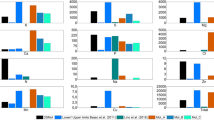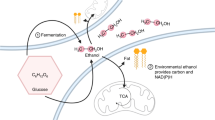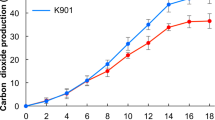Abstract
CERTAIN strains of baker's yeast (Saccharomyces cerevisiae) have been shown in this laboratory to be capable of fermenting maltose without prior exposure to this sugar provided that the growth conditions are suitably controlled. The fermentation tests were carried out for one hour in the Warburg apparatus under nitrogen, strict precautions being taken to remove all traces of dissolved oxygen from the yeast suspension and substrate solution, and only glucose-free maltose being used, because traces of both oxygen and glucose are known to enable yeast to become adapted rapidly to maltose fermentation1,2.
This is a preview of subscription content, access via your institution
Access options
Subscribe to this journal
Receive 51 print issues and online access
$199.00 per year
only $3.90 per issue
Buy this article
- Purchase on Springer Link
- Instant access to full article PDF
Prices may be subject to local taxes which are calculated during checkout
Similar content being viewed by others
References
Schultz, A. S., Atkin, L., and Frey, C. N., J. Amer. Chem. Soc., 62, 2271 (1940).
Schultz, A. S., and Atkin, L., J. Amer. Chem. Soc., 61, 291 (1939).
Conway, E. J., “Microdiffusion Analysis and Volumetric Error”, 3rd edit. (Crosby Lockwood and Son, London, 1950).
White, J., J. Inst. Brew., 62, 161 (1956).
Author information
Authors and Affiliations
Rights and permissions
About this article
Cite this article
GRYLLS, F., HARRISON, J. Adaptation of Yeast to Maltose Fermentation. Nature 178, 1471–1472 (1956). https://doi.org/10.1038/1781471a0
Issue Date:
DOI: https://doi.org/10.1038/1781471a0
This article is cited by
-
Zur Kenntnis der sogenannten Glucoseoxydase
Archiv f�r Mikrobiologie (1965)
-
Changes in the rate of fermentation of maltose during propagation of industrial Baker's yeast
Folia Microbiologica (1963)
Comments
By submitting a comment you agree to abide by our Terms and Community Guidelines. If you find something abusive or that does not comply with our terms or guidelines please flag it as inappropriate.



